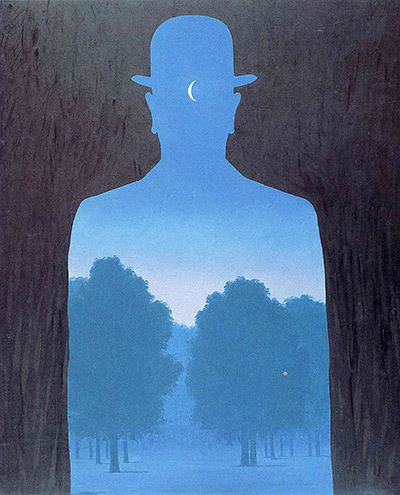A Friend of Order is an iconic oil painting by Rene Magritte - a Belgian artist who lived from 1898 to 1967 and who is a key figure in the Surrealist movement.
A Friend of Order was painted in 1964, towards the culmination of Magritte's career. It depicts a 'cut out' scenario with a dark foreground and then the figure of a man in a bowler hat cut out from this to reveal a soft a mystic moonlit landscape.
Cut out paintings, and paintings where the human form becomes the container for the heavens, are common in Magritte's work. In an early work, The False Mirror (1928), for instance, Magritte depicts an eye which contains a blue, slightly cloudy sky. In another work, The Great Family, a huge dove swoops across the landscape: the dove is 'cut out' from the landscape and its body is filled with the sky.
Like so many of Magritte's art works, A Friend of Order plays with perspective. It asks the viewer to look through objects that would usually be looked 'at' and it creates a world in which something as everyday as a man in a suit suddenly take on an oneiric quality.
A Friend of Order also revolves around another theme that was absolutely central to Magritte's work: that of the man in the bowler hat. In what is probably Magritte's most iconic work, Son of Man (painted in the same year as A Friend of Order, in 1964), is an image of a man in a bowler hat with an apple placed in front of his face. For many critics, these depictions of men in bowler hats can in fact be considered to be self portraits. One famous photo of Magritte, for example, shows him wearing a suit with a bowler hat turned upside down on his head. Moreover, it is often said that Magritte preferred the anonymity of the bowler hat 'uniform'.




